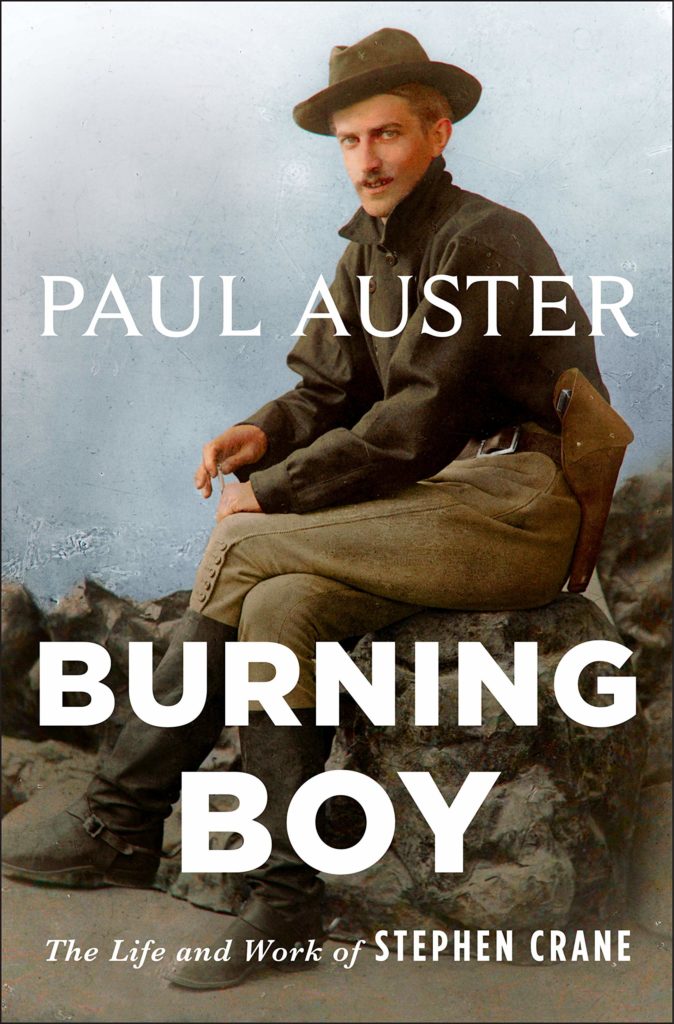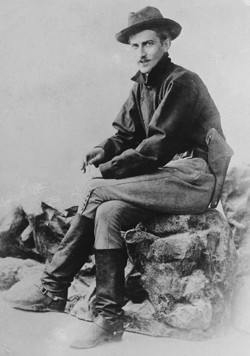Stephen Crane is best known for his Civil War novel “The Red Badge of Courage,” which the author wrote before he experienced war firsthand. That powerful book, which through the years has often been assigned by high school English teachers, secured his literary reputation for the ages.
Sadly, the second thing Crane is most known for is dying young. He was just 28 when he succumbed to tuberculosis in a German sanatorium in June 1900. But there is so much more to Crane than “Red Badge” and a tragically early death. He wrote a boatload of original, ahead-of-his-time novellas, stories, poems and newspaper articles. As for his personal life, although he left no journal or diary, he wrote some interesting letters.
Paul Auster covers all of it in this often exciting but surprisingly long (784-page) biography, which features extensive analysis along with the known facts. “I find myself just as fascinated by Crane’s frantic, contradictory life as by the work he left us,” the author states.
He is not the only one. I have been a lifelong Stephen Crane fan in no small part because of all we seem to have in common — both born in northern New Jersey, both Scorpios, both played baseball, both with writing in the blood, both spent time in New York City, both with strong connections to Hartwood and Port Jervis in New York state, and both spiritually moved by trips to the American West.
Yes, there are also plenty of differences. The one I am most grateful for is that while he was taken from this world far too young, I was permitted to live past 60 so that I could finally get some novels published. In any case, it is Stephen Crane’s West that interests me more than Stephen Crane’s Civil War.

Burning Boy
The Life and Work of Stephen Crane
by Paul Auster, Henry Holt and Company, New York, 2021, $23.97
This post contains affiliate links. If you buy something through our site, we might earn a commission.
During his four-month 1895 trek west of the Mississippi, Crane filed mostly travel articles from such places as Lincoln, Nebraska; Hot Springs, Arkansas; New Orleans; Galveston and San Antonio, Texas; and Mexico City. He came to admire the toughness, stoicism and lack of self-pity of Nebraska farmers, especially during drought and storm, and would write the strong factual piece “Nebraska’s Bitter Fight for Life.”
He also met a University of Nebraska senior named Willa Cather. Cather would go on to write such enduring books as “My Antonia” and “Death Comes for the Archbishop,” along with a memorial piece on Crane that Auster reveals “was in large measure a work of fiction.” Still, the author notes, “How interesting it is to learn that the two best American writers of their generation happened to have met at twenty-one and twenty-three in a small newspaper office in Lincoln, Nebraska.”
Crane’s visit to San Antonio inspired these words: “The Alamo remains the greatest memorial to courage which civilization has allowed to stand.” Take that, all you Civil War monument lovers.
Crane’s western experiences inspired two of his greatest short stories: “The Bride Comes to Yellow Sky,” set in Texas, and “The Blue Hotel,” which takes place during a Nebraska blizzard identical to one he experienced. “He knew that the Wild West of his boyhood was dead,” writes Auster. The frontier was officially pronounced closed in 1890, and Crane saw no gunfights or Indian fights, but, as the author notes, “Crane arrived in the region on the cusp of these changes, changes he would later exploit to great effect in his two Western masterpieces.”
Even with the coming of “civilization,” Crane saw the West as a place apart from New York and New Jersey. In a letter to a friend, he made it sound like a better place: “Damn the east! I fell in love with the straight out-and-out, sometimes-hideous, often braggart westerners because I thought them to be truer men and, by the living piper, we will see in the next fifty years what the west will do. They are serious, those fellows. When they are born they take one big gulp of wind and they live.”





